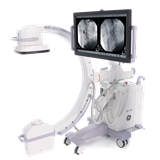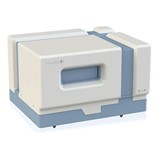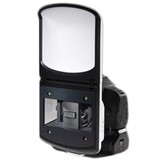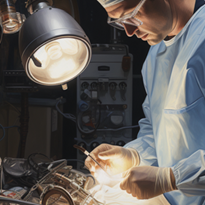In the fast-paced world of healthcare, innovations continue to drive advancements in surgical and procedure lights. These critical tools provide illumination for medical professionals during procedures, ensuring optimal visibility and precision. Over the years, significant developments have been made to enhance the quality, functionality, and efficiency of surgical and procedure lights. This article explores the latest advancements and future trends in this field, highlighting the exciting possibilities that lie ahead.
-
Evolution of Surgical & Procedure Lights
Surgical and procedure lights have come a long way since their inception. Traditional incandescent lights have been replaced by more advanced technologies, providing brighter and more focused illumination. The evolution of these lights has been driven by the need for improved surgical outcomes, reduced strain on healthcare professionals, and enhanced patient safety.
-
LED Technology Revolutionizing the Industry
One of the most significant breakthroughs in surgical and procedure lighting is the adoption of Light Emitting Diode (LED) technology. LED lights offer numerous advantages over traditional lighting solutions. They provide brighter and more uniform illumination, better color rendering, and longer lifespan. LED lights are energy-efficient, generating less heat and consuming less power, making them cost-effective and environmentally friendly.
-
Adjustable Light Intensity and Color Temperature
Modern surgical and procedure lights now feature adjustable light intensity and color temperature settings. Surgeons can customize the lighting conditions to match their specific requirements, optimizing visibility and reducing eye strain. The ability to adjust the color temperature is particularly valuable, as it allows for better tissue visualization and differentiation during procedures.
-
Integration of Imaging and Visualization Technologies
To further enhance surgical precision, imaging and visualization technologies are being integrated into surgical and procedure lights. High-definition cameras and advanced imaging systems enable real-time visualization of surgical sites, facilitating accurate decision-making and improving patient outcomes. The integration of these technologies eliminates the need for additional equipment and simplifies the surgical workflow.
-
Wireless and Portable Solutions
Advancements in wireless technology have led to the development of wireless and portable surgical and procedure lights. These lights offer greater flexibility and mobility, allowing healthcare professionals to position the lighting source precisely where it is needed. Wireless lights eliminate the constraints of tangled cords and provide uninterrupted illumination, enhancing efficiency and convenience in the operating room.
-
Energy Efficiency and Environmental Considerations
With growing concerns about energy consumption and environmental impact, surgical and procedure lights now prioritize energy efficiency. LED lights, as mentioned earlier, consume less power and generate less heat, significantly reducing energy consumption and lowering carbon emissions. These energy-efficient lights contribute to sustainable healthcare practices and align with the industry's commitment to environmental stewardship.
-
Ergonomics and Ease of Use
Modern surgical and procedure lights are designed with ergonomics and ease of use in mind. Adjustable arms, intuitive controls, and ergonomic handles enable healthcare professionals to position and manipulate the lights with minimal effort. These design features reduce physical strain on the medical staff, allowing them to focus on the procedure at hand and maintain optimal working conditions.
-
Automation and Smart Features
Automation and smart features are transforming the surgical and procedure lighting landscape. Lights equipped with motion sensors, gesture control, and voice activation enhance usability and reduce the need for manual adjustments. Automated features such as auto-focus and auto-tracking ensure the lighting remains optimal throughout the procedure, minimizing distractions and improving overall efficiency.
-
Robotic-Assisted Lighting Systems
The rise of robotic-assisted surgery has also extended to surgical lighting systems. Robotic-assisted lighting systems offer precise and automated positioning, enabling consistent illumination throughout the procedure. These advanced systems work in tandem with robotic surgical platforms, providing synchronized lighting that enhances the surgical team's performance and supports optimal patient outcomes.
-
Enhanced Safety and Infection Control Measures
Patient safety and infection control are paramount in healthcare settings. Surgical and procedure lights now incorporate features that promote safety and minimize the risk of contamination. Antimicrobial coatings, seamless surfaces, and easy-to-clean designs prevent the buildup of bacteria and facilitate thorough disinfection. These measures contribute to a sterile environment, reducing the potential for surgical site infections.
-
Future Trends in Surgical & Procedure Lighting
Looking ahead, several exciting trends are shaping the future of surgical and procedure lighting. These include:
Artificial Intelligence (AI) Integration
AI algorithms can analyze surgical footage and optimize lighting conditions in real-time. This integration will enhance surgical precision and efficiency.
Augmented Reality (AR) Overlays
AR overlays projected onto the surgical field can provide additional information, such as patient data, vital signs, and anatomical landmarks, directly within the surgeon's line of sight.
Internet of Things (IoT) Connectivity
IoT-enabled lights can communicate with other medical devices and systems, allowing seamless integration and data exchange. This connectivity improves interoperability and streamlines the surgical workflow.
3D Printing for Customized Lighting Solutions
3D printing technology enables the creation of customized lighting fixtures that perfectly match the surgical environment, optimizing illumination and reducing shadows.
Innovations in surgical and procedure lights continue to revolutionize the healthcare industry. LED technology, adjustable settings, integration of imaging technologies, wireless solutions, and smart features have significantly improved lighting quality, efficiency, and user experience. The future holds even more promise, with trends like AI integration, AR overlays, IoT connectivity, and 3D printing set to redefine surgical lighting. These advancements will ultimately benefit medical professionals and patients alike, enabling safer, more precise procedures and better patient outcomes.







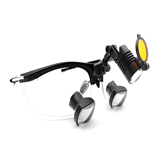


-160x160-state_article-rel-cat.png)






%20(1)-160x160-state_article-rel-cat.png)
